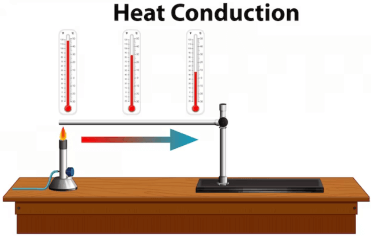Question
a.
2
b.
4
c.
1
d.
3
Posted under Heat Transfer
Interact with the Community - Share Your Thoughts
Uncertain About the Answer? Seek Clarification Here.
Understand the Explanation? Include it Here.
Q. Two long parallel surfaces, each of emissivity 0.7 are at different temperatures and accordingly have radiation exchange between them. It is desired to reduce 75% of this radiant...
Similar Questions
Explore Relevant Multiple Choice Questions (MCQs)
Q. An enclosure consists of four surfaces 1, 2, 3 and 4. The view factors for radiation heat transfers are
F 11 = 0.1
F 12 = 0.4
F 13 = 0.25
The surface areas A 1 and A 2 are 4 m² and 2 m². The view factor F 41 is
View solution
Q. The value of shape factor depends on how many factors?
View solution
Q. A large plane, perfectly insulated on one face and maintained at a fixed temperature T 1 on the bare face, has an emissivity of 0.84 and loses 250 W/m² when exposed to surroundings at nearly 0 K. The radiant heat loss from another plane of the same size is 125 W/m² when bare face having emissivity 0.42 and is maintained at temperature T 2 is exposed to the same surroundings. Subsequently these two planes are brought together so that the parallel bare faces lie only 1 cm apart and the heat supply to each is so regulated that their respective temperatures T 1 and T 2 remains unchanged. Determine he net heat flux between the planes
View solution
Q. Interchange factor for body 1 completely enclosed by body 2 (body 1 is large) is given by
View solution
Q. A thermos flask has a double walled bottle and the space between the walls is evacuated so as to reduce the heat flow. The bottle surfaces are silver plated and the emissivity of each surface is 0.025. If the contents of the bottle are at 375 K, find the rate of heat loss from the thermos bottle to the ambient air at 300 K
View solution
Q. A 250 mm by 250 mm ingot casting, 1.5 m high and at 1225 K temperature, is stripped from its mold. The casting is made to stand on end on the floor of a large foundry whose wall, floor and roof can be assumed to be at 300 K temperature. Make calculation for the rate of radiant heat interchange between the casting and the room. The casting material has an emissivity of 0.85
View solution
Q. Interchange factor for infinitely long concentric cylinders is given by
View solution
Q. What is the geometric factor for infinitely long concentric cylinders?
View solution
Q. What is the geometric factor for concentric spheres?
View solution
Q. The net heat interchange between non-black bodies at temperature T 1 and T 2 is given by
View solution
Q. A thermos flask has a double walled bottle and the space between the walls is evacuated so as to reduce the heat flow. The bottle surfaces are silver plated and the emissivity of each surface is 0.025. If the contents of the bottle are at 375 K and temperature of ambient air is 300 K. What thickness of cork (k = 0.03 W/m degree) would be required if the same insulating effect is to be achieved by the use of cork?
View solution
Q. The total radiant energy leaving a surface per unit time per unit surface area is represented by
View solution
Q. Determine the radiant heat flux between two closely spaced, black parallel plates radiating only to each other if their temperatures are 850 K and 425 K. The plates have an area of 4 m²
View solution
Q. What is the value of grey body factor for concentric cylinders?
View solution
Q. The net rate at which the radiation leaves the surface is given by
View solution
Q. A ring (E = 0.85) of 8 cm inner and 16 cm outer diameter is placed in a horizontal plane. A small element (E = 0.7) of 1 cm² is placed concentrically 8 cm vertically below the center of the ring. The temperature of the ring is 800 K and that of small area is 400 K. Find the radiant heat gain by the small ring
View solution
Q. Two opposed, parallel, infinite planes are maintained at 420 K and 480 K. Calculate the net heat flux between these planes if one has an emissivity of 0.8 and other an emissivity of 0.7
View solution
Q. The total radiant energy incident upon a surface per unit time per unit area is known as
View solution
Q. Which one of the following is true for opaque non-black surface?
View solution
Q. A radiation shield should
View solution
Recommended Subjects
Are you eager to expand your knowledge beyond Heat Transfer? We've handpicked a range of related categories that you might find intriguing.
Click on the categories below to discover a wealth of MCQs and enrich your understanding of various subjects. Happy exploring!








